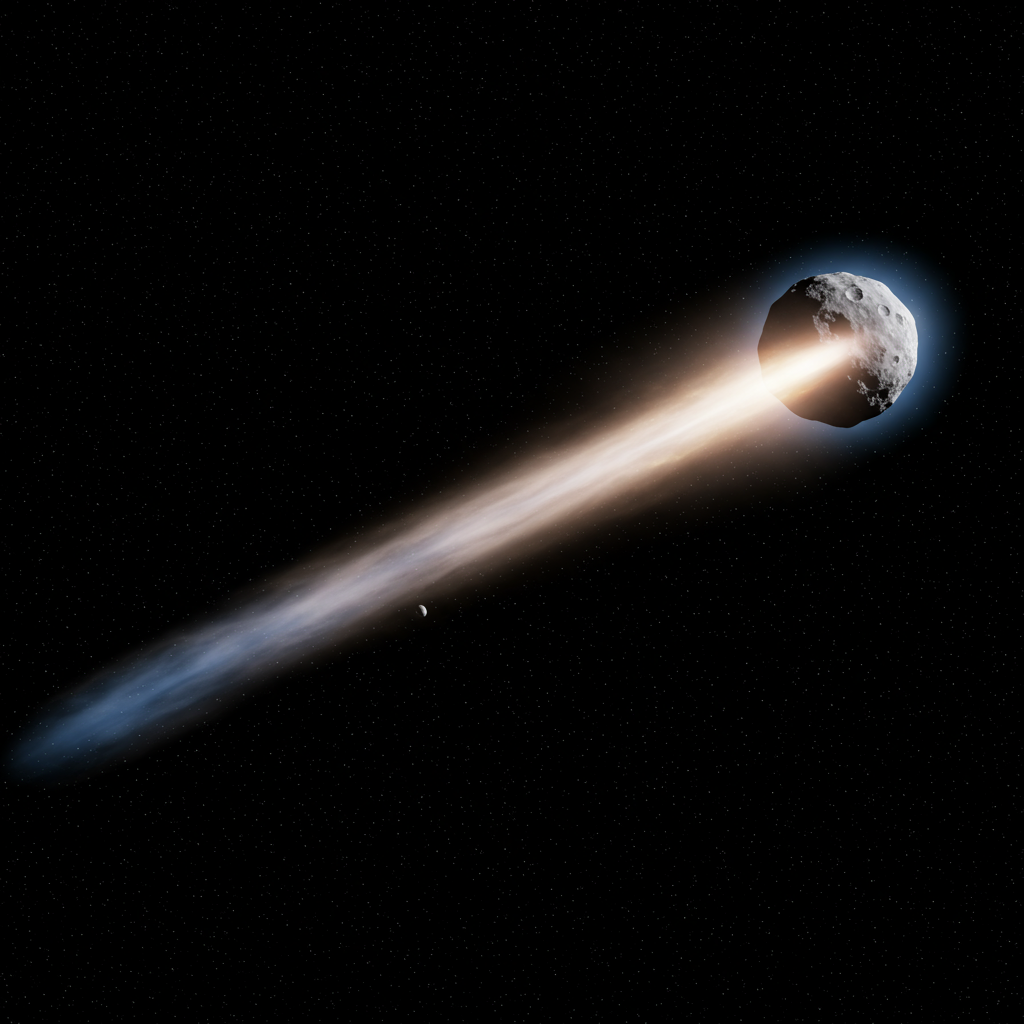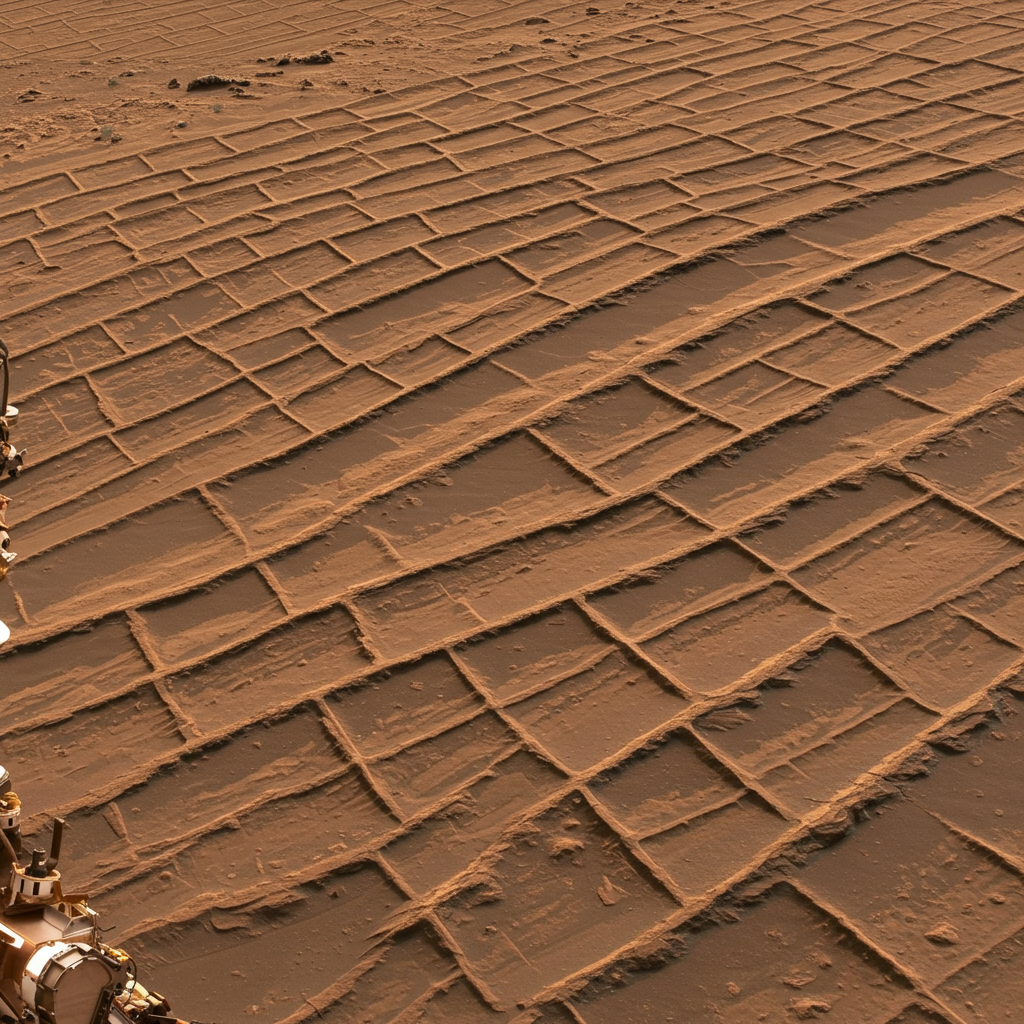A thrilling new discovery has captured the attention of astronomers worldwide. For only the third time in history, scientists have confirmed an object streaking through our solar system originated from beyond our Sun’s influence. This extraordinary visitor, initially spotted as a mysterious faint point of light, has now received an official name: 3I/atlas.
What makes this cosmic traveler so special? Its incredible speed and unique trajectory reveal it was born in another star system entirely. Unlike asteroids or comets that orbit our Sun, 3I/ATLAS is just passing through. Its confirmation as the third known interstellar object marks a significant milestone in our exploration of the cosmos.
Unmasking a Cosmic Intruder
The story of 3I/ATLAS began subtly. Data collected by the Asteroid Terrestrial-impact Last Alert System (ATLAS) telescopes between June 25 and June 29 first flagged a potentially unusual object. ATLAS uses telescopes in Hawaii, Chile, and South Africa to scan the night sky automatically. This initial detection gave the object the tentative designation A11pl3Z.
Experts quickly recognized something was different about this find. Its estimated speed and direction pointed to an origin far beyond our neighborhood. Following the initial ATLAS reports, astronomers around the globe turned their instruments towards the object. They gathered observation data stretching back to June 14, further refining its path.
On July 2, NASA and the International Astronomical Union (IAU) officially confirmed its interstellar nature. The object was formally listed as a confirmed visitor from another star system. This confirmation is based on definitive calculations of its hyperbolic orbit.
The Definitive Sign: Speed and Trajectory
The primary evidence for 3I/ATLAS being interstellar is its motion. This object is moving incredibly fast. Observations clocked its inbound speed at around 152,000 mph (245,000 km/h). More importantly, its path is exceptionally straight and flat compared to typical solar system residents. Objects orbiting our Sun follow elliptical paths. Their speeds change depending on their distance from the Sun.
An interstellar object, however, moves on a hyperbolic trajectory. It approaches with such high velocity it has enough momentum to escape the Sun’s gravity entirely after passing through. This distinct path is the smoking gun that tells astronomers an object is from another star system. 3I/ATLAS displayed exactly this kind of trajectory.
From Asteroid Guess to Comet Confirmation
Initially, astronomers weren’t sure if the object was an asteroid or a comet. Early observations seemed consistent with a large space rock, perhaps similar to the first interstellar visitor, ‘Oumuamua. However, as more data came in, the classification began to shift.
On July 2, NASA’s statement confirming the object as interstellar also revised its likely nature. They announced that A11pl3Z was most likely a comet. This classification is based on tentative signs of cometary activity. The IAU’s Minor Planet Center reported observations showing signs of a bright cloud around the object. This gas and ice cloud is known as a coma. It forms when a comet’s frozen materials are warmed by the Sun.
What looked like a potential tail was also observed. These features are characteristic of comets, not asteroids. The object received its official interstellar name, 3I/ATLAS. Its full cometary designation is C/2025 N1 (ATLAS). More observations are still needed to confirm these cometary features definitively. However, the current evidence strongly points towards a comet classification.
Joining an Elite Club: The Third Known Visitor
The discovery of 3I/ATLAS is significant because these interstellar visitors are incredibly rare finds. Before this object, astronomers had only definitively confirmed two others. The first, ‘Oumuamua, was detected in 2017. Its unusual elongated shape and behavior sparked much debate. Some astronomers even speculated it could be an alien probe. However, the consensus now is that ‘Oumuamua was a natural object. It was likely a uniquely shaped space rock or possibly a hydrogen-spewing comet.
The second confirmed visitor was Comet 2I/Borisov. This object was seen sailing through our solar system in 2019. Unlike ‘Oumuamua, Borisov clearly displayed cometary activity. It had a distinct coma and tail. Scientists have long theorized that many more interstellar objects must pass through our solar system unnoticed. Our detection capabilities have limited our ability to find them.
The discovery of 3I/ATLAS suggests that these objects, while fleeting, are indeed present. Finding a third one so relatively soon after the first two confirms that our technology is improving. It also increases the sample size for studying these rare cosmic samples.
A Sizeable Interloper
While details about the object’s exact size and shape are still being refined, early estimates provide a sense of its scale. Preliminary calculations suggest 3I/ATLAS could be quite large. Estimates place its potential width up to 12 miles (20 kilometers) across. This makes it potentially significantly larger than both ‘Oumuamua and 2I/Borisov.
This larger size is particularly exciting for scientists. A bigger object might contain more volatile materials. It could also provide a larger surface area to study its composition. Studying objects formed in other star systems offers unique insights. They can tell us about the conditions of planet formation elsewhere. They also carry clues about the composition of the interstellar medium. Experts like Jonathan McDowell and Avi Loeb have highlighted the unique research opportunities presented by its size and orbit.
3I/ATLAS’s Journey Through Our Solar System
Astronomers are tracking 3I/ATLAS closely as it speeds through our cosmic neighborhood. NASA has released updated information about its expected trajectory. Currently, the comet is far out, roughly 4.5 times the Earth-Sun distance from our star. This distance is measured in astronomical units (AU), where 1 AU is the average distance between Earth and the Sun.
The comet is inbound and heading towards the inner solar system. Its path includes several notable close approaches. It is expected to make a relatively close pass by Mars. This will occur around October 3, coming within approximately 0.4 AU of the Red Planet. This proximity might even make it potentially observable by NASA’s Mars rovers, though this is a speculative possibility.
Shortly after its Mars flyby, 3I/ATLAS will reach its closest point to the Sun. This point is called perihelion. Perihelion is predicted for sometime between October 23 and October 30. It is expected to come within 1.4 to 2 AU of our home star. Importantly, Earth will be on the opposite side of the Sun during this solar approach. This positioning means 3I/ATLAS poses absolutely no threat to our planet. Its closest approach to Earth will happen later. This will likely occur in December as the comet begins its journey back out of the solar system. At its closest point to Earth, it is expected to maintain a minimum distance of at least 1.35 AU, possibly up to 1.6 AU. This is well beyond a hazardous distance.
Observing the Interstellar Visitor
For now, 3I/ATLAS is quite faint. It is currently too dim to be seen with typical amateur stargazing equipment. However, it may brighten significantly in the coming weeks and months. This could happen as it gets closer to the Sun and its cometary activity increases. Stargazers might eventually be able to spot it with backyard telescopes.
For those eager to see the object now, opportunities exist through professional telescopes. The Virtual Telescope Project in Italy hosted a free livestream on July 3. This allowed the public to see live views of the comet. As astronomers continue to observe it, more images and potentially more livestreams may become available.
Scientists face a limited window to study this rare object. It will be observable until the end of September. At that point, it will become too close to the Sun in our sky to see. It is expected to re-emerge from behind the Sun and become observable again from December onwards. This gives researchers several months to gather crucial data before it leaves our solar system for good.
Powering Future Discoveries
The study of 3I/ATLAS is involving astronomers and powerful telescopes worldwide. Plans are in place to utilize cutting-edge facilities. The Vera C. Rubin Observatory is a key candidate. This observatory is one of the world’s most powerful optical telescopes. It is particularly adept at spotting and tracking moving objects like asteroids and comets. It recently released its first images, showcasing its impressive capabilities.
There have also been suggestions to use the James Webb Space Telescope. Webb’s infrared capabilities could help analyze the composition of the comet’s coma and tail. Studying the gases and dust ejected could reveal unique information. This material would represent samples from a distant stellar nursery. While using Webb might be challenging given the object’s speed and location, the proposal highlights the scientific interest.
The discovery of 3I/ATLAS underscores the progress in astronomical technology. Surveys like ATLAS are crucial for finding these fast-moving objects. Future facilities, like the Vera C. Rubin Observatory, are expected to significantly increase the detection rate. This means we might find interstellar visitors more frequently in the future. Each new discovery provides a unique opportunity to study matter from beyond our Sun. This helps refine our models of planet formation in other star systems. It also deepens our understanding of the vast, complex universe we inhabit. The study of these objects is not just scientifically exciting; it sparks public interest and encourages international collaboration in space exploration.
Frequently Asked Questions
What is 3I/ATLAS and why is it special?
3I/ATLAS is the official name for a newly confirmed interstellar object. It is currently passing through our solar system. It is only the third such object ever definitively identified. Its significance comes from its origin; it wasn’t born in our solar system but traveled here from another star system. Scientists confirmed its interstellar nature based on its extremely high speed (around 152,000 mph) and its hyperbolic trajectory. This path indicates it is not gravitationally bound to our Sun. Initially thought to be an asteroid, it is now classified as a comet due to observed signs of a coma (gas and ice cloud) and potentially a tail.
How can I see or learn more about the 3I/ATLAS comet?
Currently, 3I/ATLAS is too faint for most amateur telescopes or the naked eye. However, it may brighten as it approaches the Sun. Astronomers are actively observing it. Public viewing opportunities, such as the livestream hosted by the Virtual Telescope Project on July 3, may become available. Keep an eye on astronomy news sites and observatories for updates. Scientists will study it until late September when the Sun obscures it. Observation will resume in December when it reappears. You can follow reports from major observatories like the Vera C. Rubin Observatory or news from NASA and the IAU Minor Planet Center for the latest information and images.
Does 3I/ATLAS pose a threat to Earth?
No, 3I/ATLAS poses no threat to Earth. Its trajectory has been calculated, and it will pass safely through the solar system. While it will make relatively close approaches to Mars (0.4 AU in October) and the Sun (1.4-2 AU in October), Earth will be on the opposite side of the Sun during its solar flyby. Its closest approach to Earth is expected in December as it leaves the solar system. At that time, it is predicted to remain at a minimum distance of at least 1.35 AU (over 125 million miles) from our planet, well beyond any risk.
A Brief But Informative Visit
The confirmation of 3I/ATLAS as the third interstellar object to visit our solar system is a remarkable event. This cosmic interloper offers a rare chance to glimpse material from another star system. Its detection highlights the increasing power of modern astronomical surveys like ATLAS. Scientists are now racing against time to gather as much data as possible. They will use powerful telescopes like the Vera C. Rubin Observatory and potentially the James Webb Space Telescope. Every observation will provide valuable clues about its composition, origin, and the nature of objects drifting through interstellar space. As 3I/ATLAS makes its fleeting pass, it serves as a powerful reminder of the vast and dynamic universe beyond our familiar solar system.




